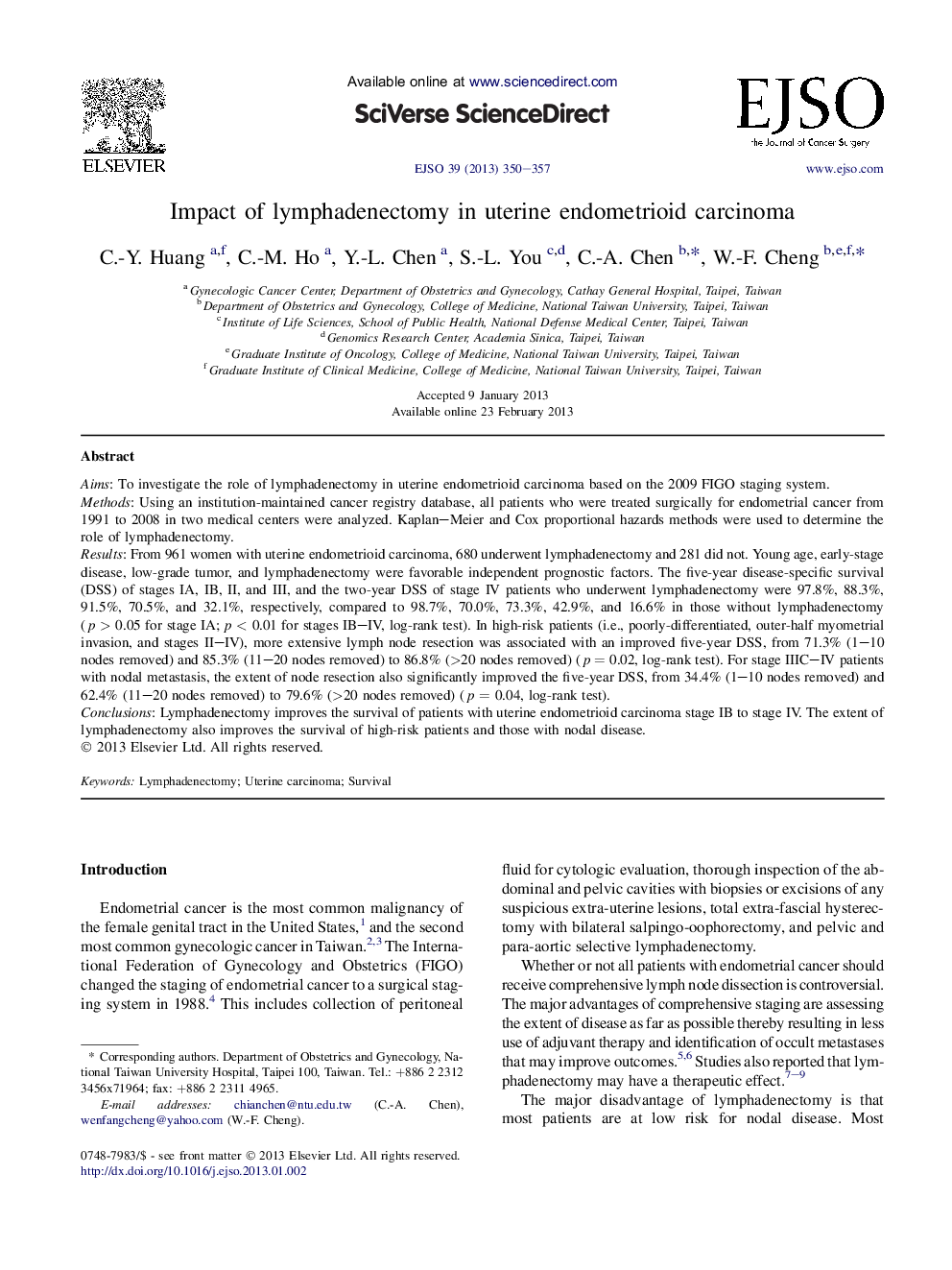| Article ID | Journal | Published Year | Pages | File Type |
|---|---|---|---|---|
| 3986301 | European Journal of Surgical Oncology (EJSO) | 2013 | 8 Pages |
AimsTo investigate the role of lymphadenectomy in uterine endometrioid carcinoma based on the 2009 FIGO staging system.MethodsUsing an institution-maintained cancer registry database, all patients who were treated surgically for endometrial cancer from 1991 to 2008 in two medical centers were analyzed. Kaplan–Meier and Cox proportional hazards methods were used to determine the role of lymphadenectomy.ResultsFrom 961 women with uterine endometrioid carcinoma, 680 underwent lymphadenectomy and 281 did not. Young age, early-stage disease, low-grade tumor, and lymphadenectomy were favorable independent prognostic factors. The five-year disease-specific survival (DSS) of stages IA, IB, II, and III, and the two-year DSS of stage IV patients who underwent lymphadenectomy were 97.8%, 88.3%, 91.5%, 70.5%, and 32.1%, respectively, compared to 98.7%, 70.0%, 73.3%, 42.9%, and 16.6% in those without lymphadenectomy (p > 0.05 for stage IA; p < 0.01 for stages IB–IV, log-rank test). In high-risk patients (i.e., poorly-differentiated, outer-half myometrial invasion, and stages II–IV), more extensive lymph node resection was associated with an improved five-year DSS, from 71.3% (1–10 nodes removed) and 85.3% (11–20 nodes removed) to 86.8% (>20 nodes removed) (p = 0.02, log-rank test). For stage IIIC–IV patients with nodal metastasis, the extent of node resection also significantly improved the five-year DSS, from 34.4% (1–10 nodes removed) and 62.4% (11–20 nodes removed) to 79.6% (>20 nodes removed) (p = 0.04, log-rank test).ConclusionsLymphadenectomy improves the survival of patients with uterine endometrioid carcinoma stage IB to stage IV. The extent of lymphadenectomy also improves the survival of high-risk patients and those with nodal disease.
